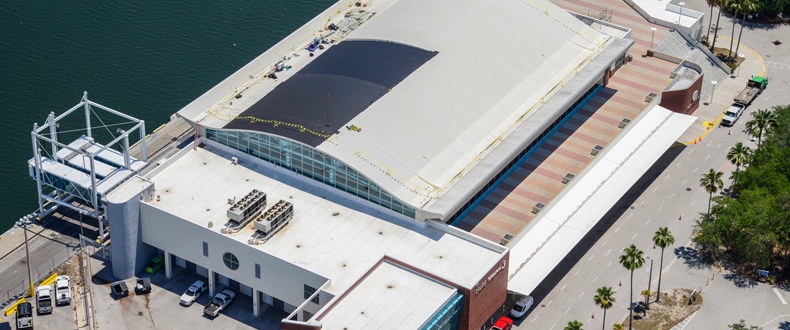There’s a lot of emphasis put on the physical properties of a single-ply membrane. This is true even though they seldom directly reflect the overall performance or design service life of the sheet. And all too often these properties are used as a weapon for competitive evaluation or marketing propaganda. But where do these physical properties and their subsequent standardization come from?
There are three basic standards for thermoplastic roofing membranes published by the American Society for Testing and Materials (ASTM).The three standards in their original order of adoption include:
- ASTM D4434 – Standard Specification for Poly Vinyl Chloride (PVC) Sheet Roofing
- ASTM D6754 – Standard Specification for Ketone Ethylene Ester (KEE) Sheet Roofing
- ASTM D6878 – Standard Specification for Thermoplastic Polyolefin (TPO) Sheet Roofing
ASTM standards are often misunderstood and the industry has weighted the standards in such a way that regardless of differences in the chemical anatomy of the materials, judgements are made regarding whether they’re fit to be roof covers. Their projected performance is also tested using a handful of laboratory tests.
Contrary to popular belief and to the subsequent overuse of the standards, they’re not necessarily meant to be the ultimate authority that comparatively evaluates products of different genres. Rather, they are meant to be minimum values to evaluate the consistency in which the manufacturer produces the product.
This is best stated in the second paragraph of the ASTM D4434:
“The tests and property limits used to characterize the sheet are values intended to ensure minimum quality for the intended purpose.”
The characterization of the products within the standard and the minimum quality evaluated is relative to the chemistry and manufacture of that product and that product alone. The standards are not yet harmonized in such a way that the same test methods can characterize the unique properties that exist among all thermoplastic membranes.
ASTM publishes “consensus” standards. There’s no supreme entity that decides which physical property limits to list or what their values should be. The type of testing is established through a consensus from the participants of various task groups. The tests by which a material is to be evaluated on are also determined by the task group that selects the method from a body of test standards and methods within the ASTM portfolio. For single-ply membranes, the dominant testing standard for physical properties is ASTM D751 – Standard Test Methods for Coated Fabrics.
The final values or property limits come from data submitted by manufacturers and/or outside laboratories. The data is averaged and generally listed at two sigma from the mean. And after this is all said and done we still find statements within the standards that confirm that there are a lot of additional factors that need to be taken into consideration with respect to overall performance of the products.
In the second paragraph of ASTM D6754 there’s a statement that appears in all three thermoplastic membrane standards:
“In-place roof system design criteria, such as fire resistance, field-seaming strength, material compatibility, uplift resistance, in-situ shrinkage, among others, are factors that must be considered, but are beyond the scope of this specification.”
The reference to “among others” is a polite way of saying that if you really want to ensure the performance of your roof system, do your homework. Yes, the ASTM standards are important for setting and hopefully ensuring that the roof covers conform to a preconceived set of characteristics, but they actually do little in forecasting the expected life cycle of any of the products. So, if a membrane meets all the requirements of the ASTM standard, how long should it last? The answer to this question is conspicuously absent within the standards. The only reference to service life is found in the ASTM D4434 and D6754:
“To make seams and repairs, the sheet shall be capable of being bonded watertight to itself during the design service life of the sheets. The manufacturer shall recommend a suitable method. Design service life is defined as the designated time period of intended system performance.”
Back in the day, when manufacturers were only offering 10-year warranties, the ASTM standards were assumed to suggest that a compliant membrane would last 10 years. We now have a marketplace with warranty offerings that extend to 30 years. Does that mean a compliant product is still only viable for 10 years and that product modifications such as increased thickness are required to meet “the designated time period of intended system performance”? Does that also mean the simplest way to harmonize all the standards is to just use thickness as the great equalizer?
I can assure you that the answer is much more simplistic. Just go visit a 30-year-old roof system to see how it’s fared. Oh, you say the product you’re considering can’t produce a 30-year-old roof. Then you have your answer.
Time is brutal but is the only true equalizer when it comes to predicting performance. ASTM may be able to establish minimum characteristics that should be considered, but until any roofing membrane can demonstrate real world endurance, any claim of predicted performance is really premature.
-1.png?width=500&height=271&name=FiberTite_Only%20(500px%20wide)-1.png)


-1.png)